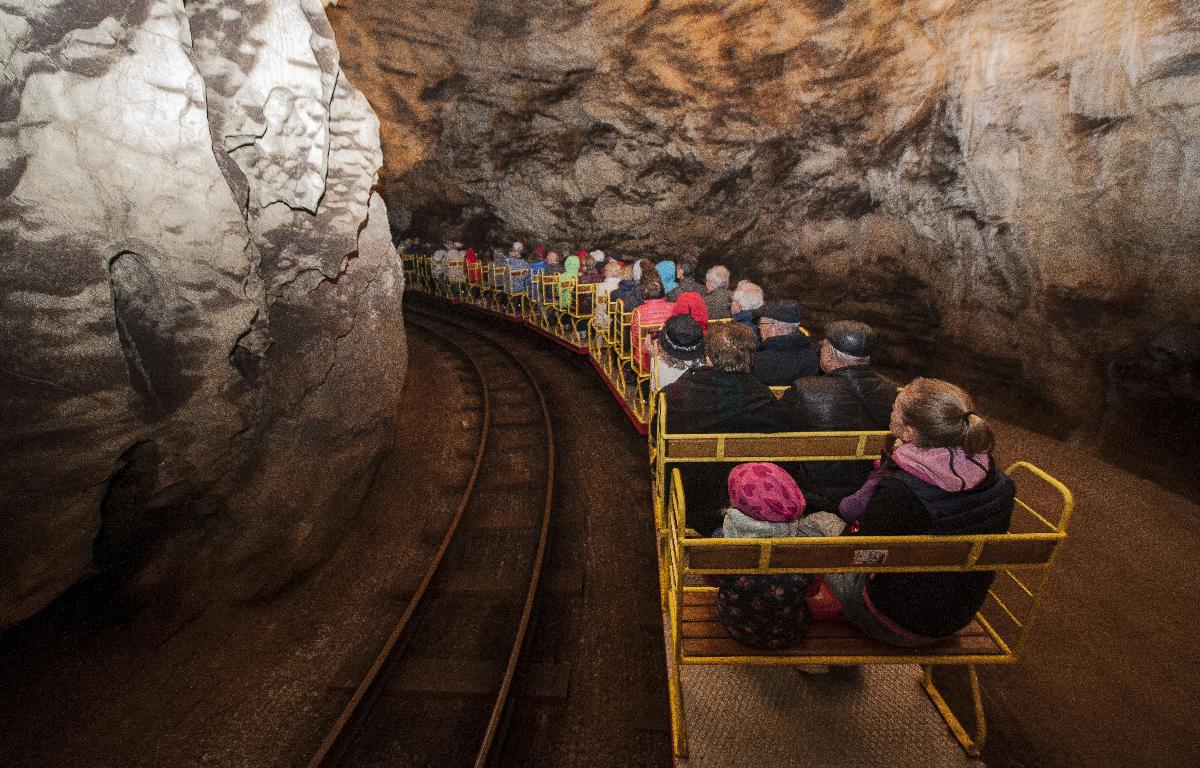
The cave’s post office in particular caught the attention of the editors. The office was built solely using materials that were small enough to be transported by the cave’s train. A small structure used by the postal service was built in 1899. Based on the available information, this makes the post office at Postojna Cave, which was placed on the list of post offices by the Universal Postal Union and the Austrian Postal Service in 1901, the oldest underground post office in the world.
The statistics on the number of postcards mailed from the post office are impressive. On Whit Monday in 1909, 12,000 visitors came to the cave and sent 37,000 postcards in three hours. During the same holiday two years later, 75,000 postcards were sent. On Assumption Day that year, 47,800 additional postcards were sent.
At first, the post office was functional only on special occasions, but from 1911 onward, it had regular hours of operation. Four postal officials worked in the office. Five tables with an awning were placed in front of the office. There, visitors could write their messages on postcards without having to worry about water dripping on them from the cave’s ceiling. During the 1911 summer season, between 6000 and 11,000 postcards were sold every day.
These days, an exhibition devoted to the 112-year history of the subterranean post office is on display in the Concert Hall. Visitors can purchase postcards and limited-edition stamps with images of the Postojna Caves. Also available is a postcard featuring a photo of the world’s first subterranean post office. The photo was published in a Vienna newspaper in 1911, according to the official website of the Postojna Cave.
The Postojna Cave is in unusual company
Slovenia’s subterranean marvel has found itself in the company of the Antinori Wine Cellar. The cellar is hidden among the hills of Tuscany. From the outside, only the restaurant’s garden, from which visitors can admire the local wine country, can be seen. The editors have also singled out two Portuguese wonders. The first is an underground parking garage in Cascais beneath the D. Diogo de Menezes Square. Its surface is covered with LED-lighted lines that resemble old navigation maps. The second is the prehistoric limestone Gruta do Escoural Cave, which features an iron stairwell.
A data center in Stockholm that was once a nuclear bomb shelter also caught the editors’ attention. The underground complex even includes waterfalls and greenhouses. Meanwhile, Switzerland boasts a private home nestled into the Alps. Guests must walk a 21-meter tunnel before they enter the home. The Tennessee Governor's Mansion hasn’t gone unnoticed either. Its basement contains a large space where various events are held.

































































